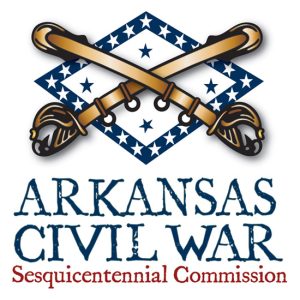calsfoundation@cals.org
Skirmish at Maysville (September 5, 1863)
aka: Skirmish at Round Prairie
| Location: | Benton County |
| Campaign: | None |
| Date: | September 5, 1863 |
| Principal Commanders: | Captain John Gardner, Captain John Worthington (US); Captain William Brown (CS) |
| Forces Engaged: | 75 men of the First Arkansas Cavalry (US); Unknown (CS) |
| Estimated Casualties: | 1 killed, 2 wounded, 23 captured (US); 4 captured (CS) |
| Result: | Confederate victory |
The September 5, 1863, Skirmish at Maysville consisted of a series of engagements over the course of a single day between Union and Confederate troops in northwestern Arkansas that ended with the complete rout of the Federal force. Originally a mission to escort a Union officer carrying messages, the movement ended with the capture of the messenger and some of his comrades.
Captain John Gardner of the Second Kansas Cavalry was ordered to ride from Springfield, Missouri, to join his regiment in the field, carrying dispatches from Brigadier General John McNeil, commander of the District of Southwestern Missouri. Gardner arrived in Cassville, Missouri, on September 1, 1863, and requested an escort of troopers from the First Arkansas Cavalry (US). The commander of the post did not provide the escort until September 3, when seventy-five men under the command of Captain John Worthington departed Cassville with Gardner. The Kansan reported that at least one-third of the men were drunk when they departed Cassville, and military discipline was almost non-existent.
Moving south, the group captured a prisoner near Bentonville (Benton County) on the morning of September 4. Paroling him, the Federals captured two more men that night and learned that a Confederate force was planning an ambush nearby. Gardner and his men attacked the Confederates on the morning of September 5, capturing another prisoner and killing one horse while forcing the enemy to retreat. The Federals continued to move southward, receiving word from a civilian that another group of Confederates lay in wait ahead in an attempt to launch another attack. The Federals changed direction and moved toward Flint Creek in an effort to avoid an engagement but were nevertheless attacked by another Confederate force. The Federals retreated in good order and had a running fight for approximately ten miles, moving south of Maysville (Benton County). Stopping to rest after the Confederates broke contact, the Federals placed pickets about half a mile from the Union force.
These pickets were soon attacked, and a Confederate force estimated at 300 men moved against the Federals. About fifty of the Union soldiers broke, while Worthington organized the remaining twenty-five and fell back to Hogeye (Washington County). Worthington tried to rally the men who fled but was unsuccessful. The Confederates continued their attack, and the Federals fell back to Round Prairie. Unable to defend their position, and losing men to enemy fire, the Federals surrendered—after Gardner destroyed his dispatches. The Confederate forces under the command of Captain William Brown took twenty-two of the Federals prisoner, while one was killed and two wounded.
Gardner and his men marched to the Confederates’ camp, where they were all paroled the next day. Gardner hired a wagon to carry the wounded to Cassville, where the Federals arrived on September 9. The Federals not captured in the skirmish also returned to Cassville. The Union soldiers who accepted parole from the Confederates were ordered to resume service with their units as the adjutant-general of the Department of Missouri deemed them to be improperly paroled.
While only a skirmish between small units, the confusion that accompanied this action is typical for engagements in the state. Federal units moving through the countryside could expect almost constant contact with the enemy, and the parole of captured troops was typical at this point of the war.
For additional information:
Christ, Mark K. “‘It was simply a fight to the death’: Civil War Record (1861–1865) of J. Montgomery Wilson.” Arkansas Historical Quarterly 80 (Spring 2021): 53–109.
The War of the Rebellion: A Compilation of the Official Records of the Union and Confederate Armies. Series 1, Vol. 22, Part 1. Washington DC: Government Printing Office, 1889.
David Sesser
Henderson State University
 Civil War Timeline
Civil War Timeline ACWSC Logo
ACWSC Logo 



Comments
No comments on this entry yet.